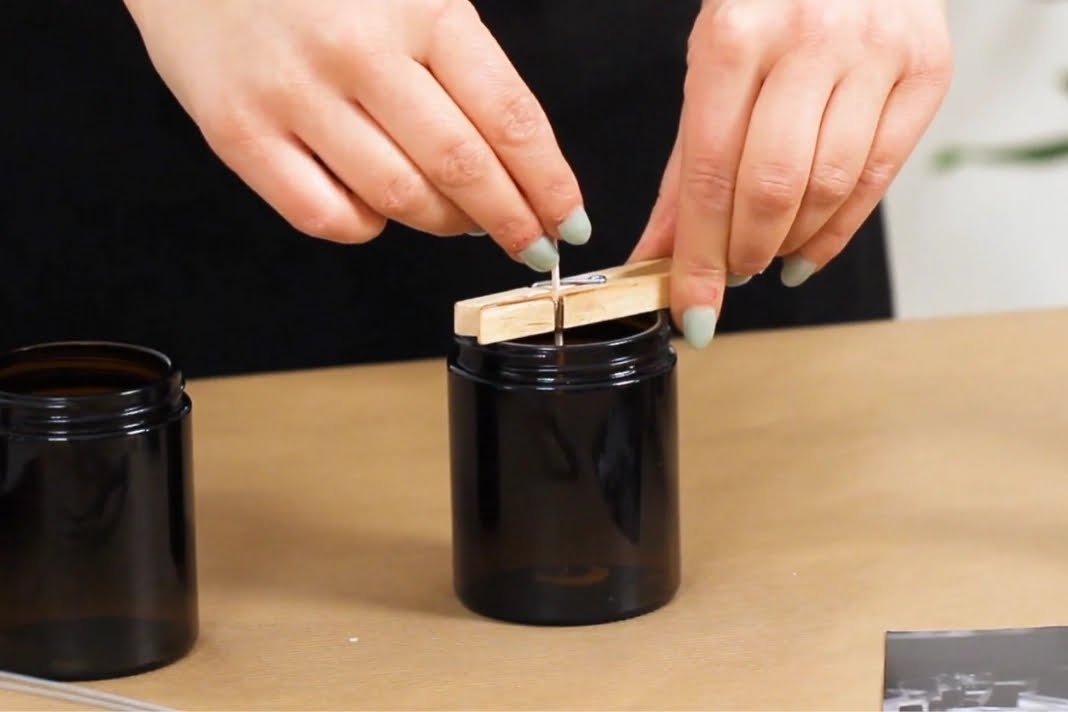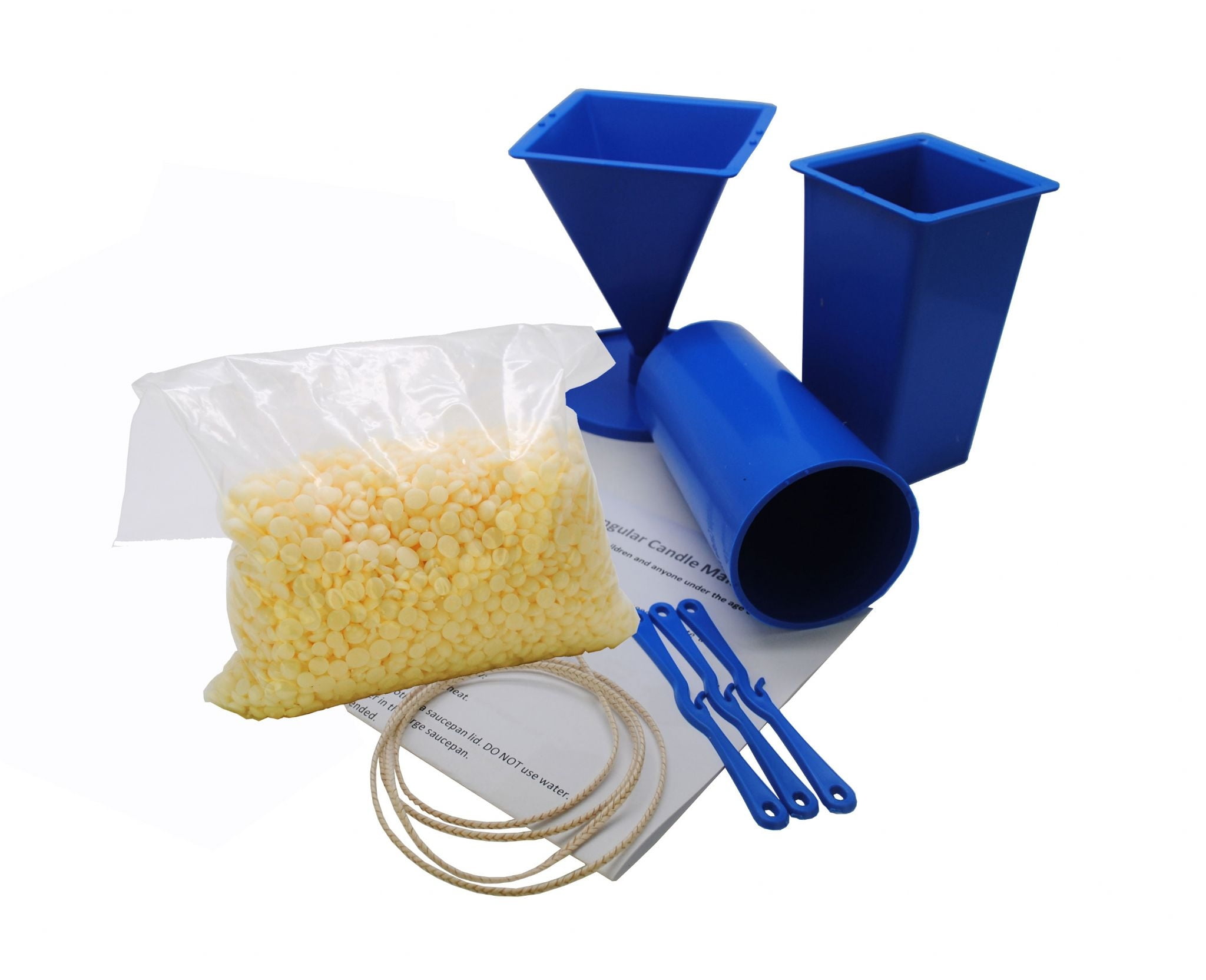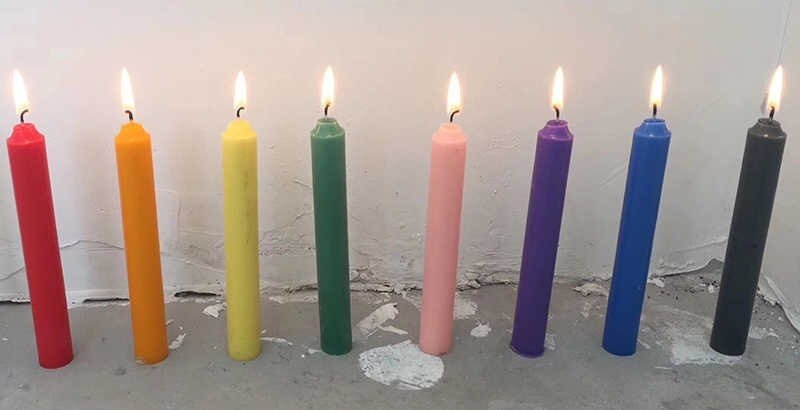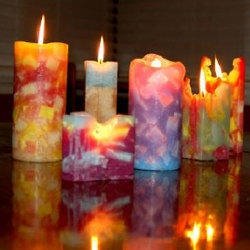Introduction
Candle making with soy wax has become a popular activity for amateur and professional crafters alike, as the material is easy to work with and offers endless possibilities. One of its unique advantages is that soy wax is temperature-dependent, meaning that it can be manipulated at different temperatures to achieve various effects. This article will explore the main benefits of using soy wax for candle making as well as how to manipulate it to produce different results.
Benefits: Soy wax offers many advantages over other types of waxes when it comes to candle making. For starters, it is renewable and biodegradable so it won’t harm the environment. Additionally, it burns cleaner than paraffin-based waxes and produces less smoke, making it a great choice for those with allergies or asthma. Finally, soy wax candles last longer than those made from other materials, though they can be more expensive due to their higher quality.
Manipulation: The temperature-dependent nature of soy wax allows you to basically customize every aspect of your candles: shape, color, scent, melting point and burn time ” just to name a few! The temperatures used to manipulate soy vary depending on what effect you are trying to achieve; Generally speaking if you heat the Soy up then hitting between 120 – 140 degrees Fahrenheit should give you the best results. To add color or scent you need more extreme temperatures around 160 – 180 degrees Fahrenheit while harder textures requires even higher temperatures (200 Degrees+). Playing around with these exact numbers until you get the desired consistency or texture will ensure your candles look exactly like you want them too!
Overview of Soy Wax Types
Soy wax is one of the most popular materials used in candle making because it is a natural product. It burns clean and releases no toxins into the air, making it safe to use indoors. Soy wax can be melted at relatively low temperatures, usually between 120°F and 160°F (50°C – 70°C). Depending on the type of soy wax you are using, different additives may need to be added to enhance your candle’s fragrances and aesthetics.
There are two main types of soy wax used for candle-making: 100% Soy Wax and Blended Soy Wax. 100% Soy Wax usually requires a higher melting temperature of between 140°F and 158°F (60°C – 70°C). Blended Soy Wax has an easier melting point, which makes it more accessible for beginner candle makers. Its melting temperature range is more forgiving at 120°F to 145°F (50°C – 63°C).
Reclaimed or eco-friendly soy wax is also becoming widely available now as an environmentally friendly alternative. This type of wax consists mainly of recycled content from food industry by-products such as vegetable oils and animal fat, so melts at a slightly lower temperature range than traditional paraffin based soy blends”closed to 120 °F (50 °C). Eco-Friendly or reclaimed soy wax sometimes require the addition of additives such as vegetable stearic acid emulsifier to ensure proper cooling and curing time.
Benefits of Soy Wax
Soy wax is a popular choice for candle making due to its natural properties. Its organic composition makes it a more eco-friendly option than wax derived from other sources such as petroleum. Additionally, soy wax candles last longer, burn cleaner with minimal soot, and the scent of essential oils and fragrances are more effective compared to other types of wax. Soy wax has a lower melt point than paraffin wax, meaning candles made from soy will have an optimal burning temperature; this results in an even and consistent burn all the way to the bottom of the candle. Soy candles can also hold up to 3 times more scent allowing for stronger fragrance throw. Furthermore, these candles are biodegradable since soy comes from plants rather than petroleum, making them easier to clean up when spilled than their alternatives.
How to Determine Wax Melting Point
When it comes to making candles using soy wax, determining the correct melt temperature is an important step in the candle making process. Soy wax has a lower melting point than other types of wax, making it a popular choice for many hobbyists and professional candle makers. To achieve the best results, it’s recommended that you heat soy wax between 120-125°F when melting. Be sure to use a reliable thermometer when attempting to reach this temperature to avoid scorching or burning your wax. Once the desired temperature is reached and the wax is fully melted, you can start adding your smells and colorings as desired. It’s important to note that if temperatures exceed 130°F, it may cause your wicks to not burn properly and lead to holes or dips in your candles as they cool. Always be sure to keep temperatures below this range for consistent results with soy wax candle making!
Best Practices for Temperature Settings
When working with Soy wax for candle making, the ideal temperature for pouring is between 131-140°F or 55-60°C. It’s important to ensure you are monitoring the temperature of your wax before beginning as wax heated above its melting point can start to smoke and become unstable – resulting in poor performance and uneven burning.
Before pouring, heat your soy wax in either a double boiler or a dedicated melter until the desired temperature is reached. Note that overly hot temperatures should be avoided as they can lead to discoloration in finished candles. To help prevent overheating, preheating can be done between 100-120°F or 38-49°C. Additionally, it’s always a good idea to stir your wax while it is melting as this will help regulate and maintain an even temperature.
Once your soy wax has been poured into a mold or jar, allow it some time to cool until it reaches room temperature (usually 66-77ºF or 19-25ºC). The cooling period usually takes between 4-10 hours depending on the size of each of your candles. During this time you should manually check for any irregularities such as indentations on the surface of the candle, which means that additional heat should be added if necessary.
Finally, once cooled, trim any excess wick before lighting your new soy candle and enjoy!
Troubleshooting Temperature and Wax Combination Issues
When it comes to making soy wax candles, the correct temperature of your wax is crucial to achieving consistent results each time. Depending on the type of wax you are using, its melting point can vary greatly, so understanding how to troubleshoot issues with temperature and wax combination is vital.
The melting point of soy wax typically ranges between 120-155F (49-68C). If the temperature of your soy wax is too low, it will not melt entirely, leaving some unmelted beads in your container which can cause tunneling when lit. If your wax is too hot when you pour it into the container or pour over any decorations such as embeds or scents then you risk losing some of those decorations or causing discoloration from heat bloom due to scorching of the scent oils.
If you find that your melted soy wax is consistently failing to disperse well and/or forming lumpy patches, it could be a sign that either the wick being used is too large for the candle size or inadequate fragrance load being added may also be an issue. Try reducing the diameter of the wick used in future batches or add additional fragrance per pound/kilogram used – but make sure you obey guidelines set out by fragrance manufacturers. Additionally, be mindful that some decoration pieces don’t like high temperatures for extended periods without moisture – paper labels may get soggy and fall apart if left in a hot environment for too long ” therefoe always have a glass of warm water nearby incase something needs cooling quickly!
Experiments for Temperature and Soy Wax Testing
When it comes to the best temperature for candle making with soy wax, the “one-size-fits-all” answer doesn’t apply. Different brands and types of soy wax have unique characteristics that need to be experimented with in order to determine what temperature works best. Furthermore, if you are using additives such as scent or dye, they will likely require different temperatures and could affect performance. The best way to find out what temperature is perfect for your specific soy wax is to experiment with various temperatures and determine which one provides ideal results in terms of burn time, scent throw, etc.
To start refining candles made with soy wax, it’s recommended to keep the pouring temperature around 130°F (54°C). This lower range typically makes thermal expansion easier than higher melting points. You can then begin increasing or decreasing this base temperature by 5°F intervals until you find your desired result. Be sure to take notes so you can repeat successful recipes or troubleshoot any issues that arise from ones that don’t work out well. Additionally, remember that dropping the pour temp too low can possibly cause erratic burning. Keep up a good thermometer practice when experimenting; measuring the temperature of both melting pots and containers accurately will help ensure success!
Conclusion
Soy wax is a popular choice for making candles due to its low melting temperature and easy cleanup. Many people prefer soy wax to traditional paraffin wax as it burns longer and has many benefits such as being biodegradable, clean-burning, and non-toxic. Soy wax also comes in an array of colors and fragrances that give candle makers endless possibilities to create beautiful candles with unique designs. With the help of modernized industry processes, soy wax can now be made without any animal byproducts or components extracted from animals. Moreover, soy wax outperforms other types of wax in terms of burning time, safety and environmental friendliness ” making it one of the best materials for candle making projects at home or in the workplace. In short, soy wax offers great options for creating beautiful and safe candles with less effort than other kinds of candles ” making it the preferred choice among modern candle makers today.

Welcome to my candle making blog! In this blog, I will be sharing my tips and tricks for making candles. I will also be sharing some of my favorite recipes.





